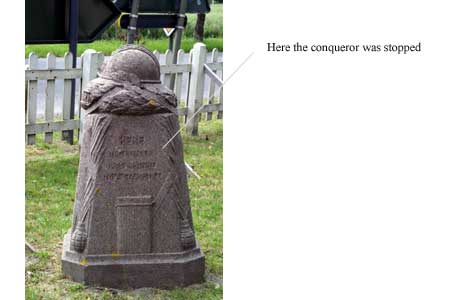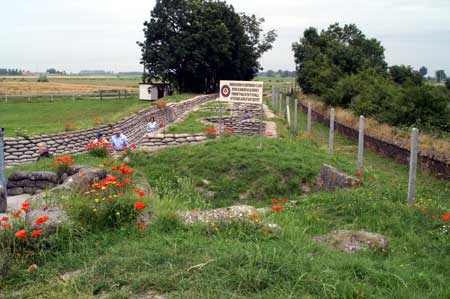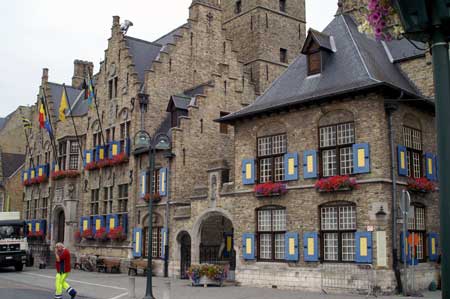
This is the place that caused the German advance to be bogged down. The dikes
were opened here flooding the lowlands along the river. The result was a
four-year-long stalemate broken when America joined the fray pushing the
Germans back and forcing the armistice (how is that really spelled?) and
the end to the war (but then setting the almost inevitable next war’s
stage).
I’m at a restaurant for dinner. I never stopped for lunch, and almost all
the restaurants here feature seafood. Being on the ocean and a popular
tourist destination adds to the demand for seafood. I wanted steak, so it
took a couple of stops in different restaurants until I found one that
features red meat on the menu. Even at that, rather than bread, they
brought some strange looking shrimp, probably cooked in something, still in
their shells. Along with them came an empty bowl. I tried to peel one, but
it just came apart. I’m not interested in whole tiny, cold, damp shrimp so
the small bowl full of them are just sitting there. I’ll let the waiter
take them away when he brings my meal.
I’m not even half way done on this tour. It’s 6:30 pm and I’ll be here
another half hour. There’s two more stops in this town, including a walking
tour around the locks, before continuing back south on the German side of
the line.
Since this was the sector assigned to the Belgians and they were supposed
to be neutral in this conflict (the Germans certainly didn’t care about
that), the Beligian army took essentially a “stop them and hold them”
stance. They did not attack or become the aggressors in the war at the
order of their then King Albert. My next stop is a monument to him.
Also, most of this tour has been about the Belgian involvement, told from
their viewpoint. I learned today some interesting things. At that time the
official language was French. The officers spoke French and had been
trained by the French. Most of the enlisted / conscripted ranks spoke
Flemish (a dialect of Dutch) and didn’t read or write French. That lead to
huge communication problems that were never really solved during the war.
There had already been a big separatist movement before the war. As these
dissidents were conscripted into the army, they began organizing the
soldiers and campaigning for equality of Flemish. Many were sent to jail
and a few were executed for insubordination, further exacerbating the
situation.
Meanwhile, on the other side of the line, the Germans were promising a
Flemish state under German rule, of course, in return for Belgian
cooperation, which was meet with disdain by dissident and loyal citizen
alike. The Germans were not light in their retribution, executing 10
Belgians for each act of supposed insubordination. So there was a kind of a
civil war going on under the umbrella of the larger conflict.
The meal has been good. Steak with a mushroom sauce, fries (of course), and
a pretty good side salad. The sky, which has threatened rain all day, has
brightened up a bit. I’ll at least visit King Albert and then decide what
to do after that.
————————–
Sent from my BlackBerry Wireless Handheld







